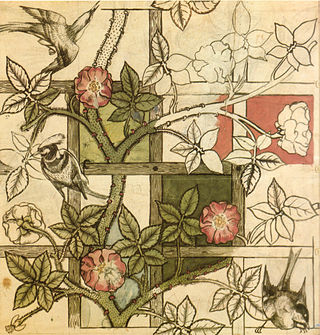
The Arts and Crafts movement was an international trend in the decorative and fine arts that developed earliest and most fully in the British Isles and subsequently spread across the British Empire and to the rest of Europe and America.

Scouting in California has a long history, from the 1910s to the present day, serving thousands of youth in programs related to their environments.

Julia Morgan was an American architect and engineer. She designed more than 700 buildings in California during a long and prolific career. She is best known for her work on Hearst Castle in San Simeon, California.
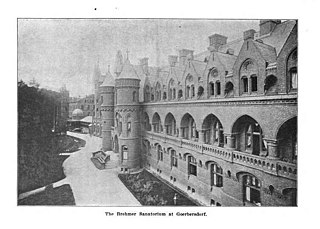
A sanatorium, also sanitarium or sanitorium, is a historic name for a specialised hospital for the treatment of specific diseases, related ailments, and convalescence. Sanatoriums are often in a healthy climate, usually in the countryside. The idea of healing was an important reason for the historical wave of establishments of sanatoria, especially at the end of the 19th and early 20th centuries. One sought, for instance, the healing of consumptives especially tuberculosis or alcoholism, but also of more obscure addictions and longings of hysteria, masturbation, fatigue and emotional exhaustion. Facility operators were often charitable associations, such as the Order of St. John and the newly founded social welfare insurance companies.

Bernard Ralph Maybeck was an American architect in the Arts and Crafts Movement of the early 20th century. He worked primarily in the San Francisco Bay Area, designing public buildings, including the Palace of Fine Arts in San Francisco, and also private houses, especially in Berkeley, where he lived and taught at the University of California. A number of his works are listed on the National Register of Historic Places.

Studio pottery is pottery made by professional and amateur artists or artisans working alone or in small groups, making unique items or short runs. Typically, all stages of manufacture are carried out by the artists themselves. Studio pottery includes functional wares such as tableware and cookware, and non-functional wares such as sculpture, with vases and bowls covering the middle ground, often being used only for display. Studio potters can be referred to as ceramic artists, ceramists, ceramicists or as an artist who uses clay as a medium.

Frederick Hurten Rhead (1880–1942) was a ceramicist and a major figure in the Arts and Crafts movement. A native of England, he worked as a potter in the United States for most of his career. In addition to teaching pottery techniques, Rhead was highly influential in both studio and commercial pottery. He worked for the Roseville Pottery, established his own Rhead Pottery (1913–1917), and in 1935 designed the highly successful Fiesta ware for Homer Laughlin China Company.
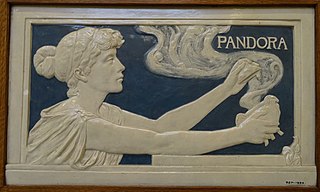
The Della Robbia Pottery was a ceramic factory founded in 1894 in Birkenhead, near Liverpool, England. It closed in 1906. Initially it mostly made large pieces with high artistic aspirations, especially relief panels for architectural use, but also ornamental vessels and plates, intended for display rather than use.
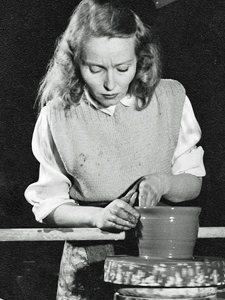
Edith Kiertzner Heath was an American studio potter and founder of Heath Ceramics. The company, well known for its mid-century modern ceramic tableware, including "Heathware," and architectural tiles, is still operating in Sausalito, California, after being founded in 1948.

City of Hope is a private, non-profit clinical research center, hospital and graduate school located in Duarte, California, United States. The center's main campus resides on 110 acres (45 ha) of land adjacent to the boundaries of Duarte and Irwindale, with a network of clinical practice locations throughout Southern California, satellite offices in Monrovia and Irwindale, and regional fundraising offices throughout the United States.

The Roseville Pottery Company was an American art pottery manufacturer in the 19th and 20th centuries. Along with Rookwood Pottery and Weller Pottery, it was one of the three major art potteries located in Ohio around the turn of the 20th century. Though the company originally made simple household pieces, the Arts and Crafts–inspired designs proved popular, and Roseville pieces are now sought after by collectors.

Glen Lake Sanatorium, a tuberculosis treatment center serving Hennepin County in Minnesota, opened on January 4, 1916, with a capacity of 50 patients, and closed in 1976. In 1909, the Minnesota State Legislature had passed a bill authorizing the appointment of county sanatorium boards and appropriating money for the construction of county sanatoriums. Glen Lake Sanatorium was the fifth of fourteen county sanatoria that opened in Minnesota between 1912 and 1918. Glen Lake was the first U.S. tuberculosis sanatorium to be accredited by the American Medical Association.The sanatorium had its own post office, and the mailing address was Glen Lake Sanatorium, Oak Terrace, Minnesota, until the surrounding area was incorporated into the City of Minnetonka.
The Bothin Convalescent Hospital was established in 1910 as a place for women and children to convalesce after illness or surgery. The hospital was built by Henry Bothin on a thousand-acre parcel of land he had purchased in 1903 along the Northwestern Pacific Railroad near Fairfax, California. Later, a tuberculosis sanitarium was constructed on the same property. A railroad station named Bothin served the hospitals. When Bothin died in 1923, he left behind a charitable foundation to support these facilities and other non-profit organizations. The convalescent home closed in 1940 and the tuberculosis hospital operated until the 1950s.

California Faience was a pottery studio in Berkeley, California, in existence from 1915 to 1959. The pottery produced tiles, decorative vases, bowls, jars and trivets. The pottery was founded by William Victor Bragdon and Chauncey R. Thomas who also taught at the California School of Arts and Crafts in Oakland, California. The name refers to a pottery style and technique: faience.

Solon and Schemmel Tile Company (S&S) was a tile pottery business in San Jose, California from 1920 – 1936. The company's tiles adorn Steinhart Aquarium in San Francisco and the Hearst Castle in San Simeon, California. Other projects included tiles for the Orpheum and Junior Orpheum theaters in Los Angeles, the Mark Hopkins Hotel, Central Classroom Building at San Jose State University, Y.M.C.A. buildings in San Diego and Honolulu, the Dollar Steamship Line building at Portland, Oregon, the Oakland and Berkeley war memorials. and the Frank P. Williams House in Sacramento. Their tiles were used by Helen Bell Bruton and her sister Margaret Bruton to create the Fleishhacker Zoo Mother’s House mosaics. The business was eventually subsumed into Stonelight Tile and is one of the only major California tile manufacturers from the 1920s to have survived to the present.

American art pottery refers to aesthetically distinctive hand-made ceramics in earthenware and stoneware from the period 1870-1950s. Ranging from tall vases to tiles, the work features original designs, simplified shapes, and experimental glazes and painting techniques. Stylistically, most of this work is affiliated with the modernizing Arts and Crafts (1880-1910), Art Nouveau (1890–1910), or Art Deco (1920s) movements, and also European art pottery.

Camille Antoine Arnoux Solon (1877–1960) was a British muralist and ceramist of French descent. He was born in Staffordshire, England to French parents. Several of Solon's siblings had artistic careers including the eldest Léon-Victor Solon.
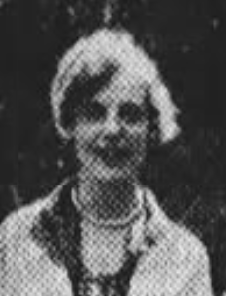
Verena Marie Ruegg was an American painter, animator, and camerawoman. Her work was part of the painting event in the art competition at the 1932 Summer Olympics. During World War II, she worked in animation at Disney and Warner Brothers studios.
John Bakewell Jr. (1872–1963) was an American architect, based in San Francisco, California, U.S..



















